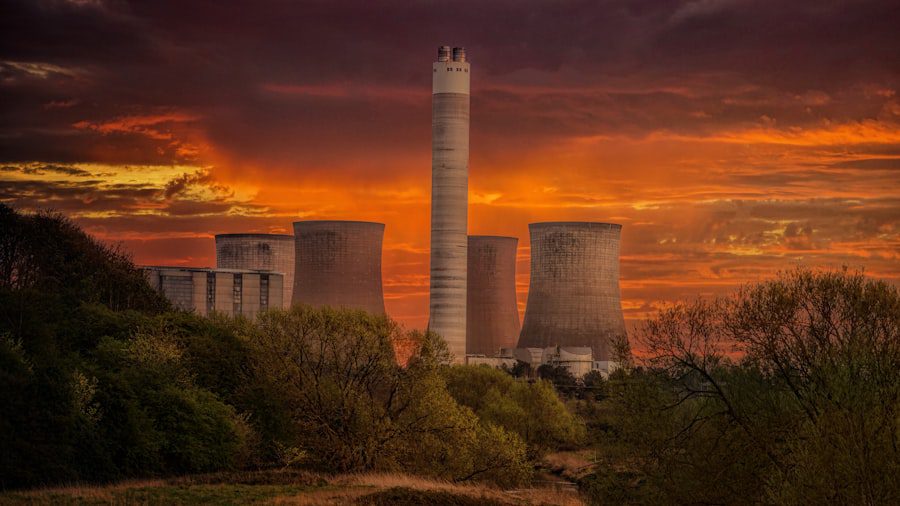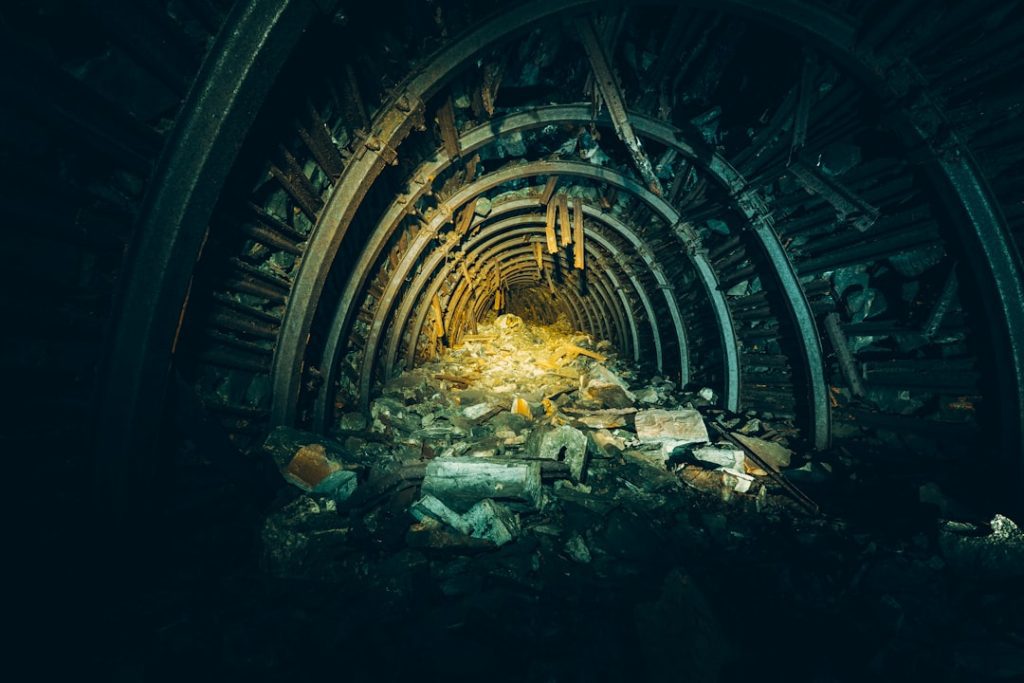Clean coal production standards are guidelines and regulations designed to reduce the environmental impact of coal mining and usage. These standards aim to minimize the release of pollutants into the atmosphere and waterways while promoting efficient use of coal resources. They are essential for maintaining coal as a viable energy source while addressing concerns about climate change and air quality.
Implementing these standards helps the industry move towards a more sustainable and environmentally responsible future. The development of clean coal production standards has been driven by the need to address the negative environmental and health impacts associated with traditional coal production and usage. As global energy demand increases, it is crucial to minimize coal’s environmental footprint while meeting society’s energy needs.
These standards provide a framework for achieving this balance by promoting responsible mining practices and encouraging the use of advanced technologies to reduce emissions and waste. By establishing clear industry standards, stakeholders can collaborate to improve the sustainability of coal production and usage.
Key Takeaways
- Clean coal production standards aim to reduce the environmental impact of coal production and usage.
- Setting clean coal production standards is important for protecting the environment and public health.
- Factors such as technology, regulations, and market demand can affect clean coal production standards.
- Implementing strategies like investing in clean coal technology and improving efficiency can help meet production standards.
- Monitoring and evaluating progress is crucial for ensuring compliance with clean coal production standards and identifying areas for improvement.
- Overcoming challenges such as cost, resistance to change, and technical limitations is essential for meeting clean coal production standards.
- The future of clean coal production standards depends on continued innovation and commitment to sustainability.
Understanding the Importance of Setting Clean Coal Production Standards
Environmental Protection and Public Health
Setting clean coal production standards is essential for protecting the environment and public health. Coal mining and combustion can release a range of pollutants, including sulfur dioxide, nitrogen oxides, particulate matter, and mercury, which can have serious impacts on air and water quality.
Minimizing Environmental Impacts
By establishing standards for emissions and waste management, the industry can minimize these impacts and reduce its overall environmental footprint. This proactive approach can help mitigate the negative effects of coal production on the environment.
Long-term Viability and Social License
In addition to environmental concerns, setting clean coal production standards is also important for ensuring the long-term viability of the coal industry. By proactively setting and meeting clean coal production standards, the industry can demonstrate its commitment to responsible practices and build trust with stakeholders. This can help to secure the industry’s social license to operate and maintain its relevance in a rapidly changing energy landscape.
Factors Affecting Clean Coal Production Standards

Several factors can influence the development and implementation of clean coal production standards. One of the most significant factors is technological advancements. As new technologies emerge, such as carbon capture and storage (CCS) and advanced emissions control systems, the industry’s ability to reduce its environmental impact improves.
This can lead to updates in clean coal production standards to reflect these advancements and encourage their adoption across the industry. Another factor that can affect clean coal production standards is regulatory requirements. Government agencies may establish or update regulations related to emissions, waste management, and other environmental aspects of coal production and usage.
These regulations can drive changes in industry practices and necessitate updates to clean coal production standards to ensure compliance. Economic considerations also play a role in shaping clean coal production standards. The cost of implementing new technologies or practices to meet these standards can impact their feasibility for industry stakeholders.
Additionally, market demand for cleaner coal products can influence the need for more stringent standards to meet consumer expectations.
Implementing Strategies to Meet Clean Coal Production Standards
| Strategy | Metrics |
|---|---|
| Investing in Carbon Capture Technology | Reduction in CO2 emissions |
| Implementing Advanced Coal Washing Techniques | Reduction in ash and sulfur content |
| Upgrading Boiler Technology | Improved efficiency in coal combustion |
| Implementing Scrubber Technology | Reduction in air pollutants |
Meeting clean coal production standards requires a multifaceted approach that involves various strategies and initiatives. One key strategy is investing in advanced technologies for emissions control and waste management. This may include the adoption of CCS systems, which capture carbon dioxide emissions from coal-fired power plants and store them underground, preventing them from entering the atmosphere.
Another important strategy is promoting sustainable mining practices. This involves minimizing the environmental impact of coal mining operations through measures such as reclamation of mined land, reducing water usage, and controlling erosion and sedimentation. By implementing these practices, the industry can work towards meeting clean coal production standards while also minimizing its impact on local ecosystems.
Furthermore, collaboration among industry stakeholders is essential for implementing strategies to meet clean coal production standards. This may involve partnerships between mining companies, power plant operators, technology providers, and government agencies to share best practices, research new solutions, and develop industry-wide initiatives for sustainability.
Monitoring and Evaluating Progress Towards Clean Coal Production Standards
Monitoring and evaluating progress towards clean coal production standards is essential for ensuring that the industry is on track to meet its environmental goals. This involves tracking key performance indicators related to emissions, waste management, energy efficiency, and other relevant metrics. By regularly assessing these indicators, stakeholders can identify areas for improvement and take corrective actions as needed.
One approach to monitoring progress towards clean coal production standards is through the use of environmental management systems (EMS). An EMS provides a framework for systematically managing environmental responsibilities within an organization, including setting objectives, implementing processes to achieve those objectives, and monitoring performance. By implementing an EMS, coal industry stakeholders can ensure that they are effectively managing their environmental impact and working towards meeting clean coal production standards.
In addition to monitoring progress internally, external verification through third-party audits or certifications can provide independent validation of a company’s efforts to meet clean coal production standards. This can help build trust with stakeholders and demonstrate a commitment to transparency and accountability in environmental performance.
Overcoming Challenges in Meeting Clean Coal Production Standards

Financial Barriers
One of the significant challenges is the cost associated with implementing new technologies and practices to reduce emissions and waste. These investments may require significant capital expenditures, which can be a barrier for some companies, particularly smaller operators with limited resources.
Regulatory Complexity
Another challenge is the complexity of regulatory requirements related to clean coal production standards. Navigating a complex web of regulations at the local, national, and international levels can be daunting for industry stakeholders. This complexity can create uncertainty and make it challenging to develop clear strategies for meeting clean coal production standards.
Public Perception and Acceptance
Furthermore, public perception of coal as an energy source can present challenges for meeting clean coal production standards. Negative perceptions of coal’s environmental impact may lead to opposition from communities and advocacy groups, making it more difficult for the industry to implement changes and gain support for its efforts.
The Future of Clean Coal Production Standards
The future of clean coal production standards holds great promise for advancing the sustainability of the coal industry. As technology continues to evolve, new opportunities will emerge for reducing emissions and waste associated with coal production and usage. This will enable the industry to continue providing a reliable source of energy while minimizing its environmental impact.
To realize this future, collaboration among industry stakeholders will be essential. By working together to share best practices, develop innovative solutions, and advocate for supportive policies, the industry can overcome challenges and make meaningful progress towards meeting clean coal production standards. Ultimately, setting and meeting clean coal production standards is not only about protecting the environment; it is also about securing the long-term viability of the industry.
By demonstrating a commitment to responsible practices and sustainability, the coal industry can build trust with stakeholders and ensure its relevance in a rapidly changing energy landscape. With continued dedication to meeting clean coal production standards, the industry can play a vital role in providing energy security while minimizing its environmental footprint.
If you’re interested in learning more about innovative packaging for coal and briquettes, check out this article on Almassiyah. It discusses the latest advancements in packaging technology for coal and briquettes, which is an important aspect of clean coal production standards.
FAQs
What are clean coal production standards?
Clean coal production standards refer to the set of regulations and guidelines aimed at reducing the environmental impact of coal production and usage. These standards focus on minimizing air and water pollution, reducing greenhouse gas emissions, and promoting the use of advanced technologies for cleaner coal production.
Why are clean coal production standards important?
Clean coal production standards are important because they help mitigate the negative environmental effects associated with coal production and usage. By implementing these standards, the coal industry can reduce its carbon footprint, protect air and water quality, and contribute to global efforts to combat climate change.
What are some key components of clean coal production standards?
Key components of clean coal production standards include the use of advanced pollution control technologies, such as scrubbers and filters, to reduce emissions of sulfur dioxide, nitrogen oxides, and particulate matter. Additionally, standards may address the proper disposal of coal ash and the implementation of carbon capture and storage (CCS) technologies to reduce greenhouse gas emissions.
How do clean coal production standards impact the coal industry?
Clean coal production standards can impact the coal industry by requiring investments in cleaner technologies and processes, which may increase production costs. However, these standards also present opportunities for innovation and the development of new technologies that can improve the environmental performance of coal production.
Are there international standards for clean coal production?
Yes, there are international standards and guidelines for clean coal production, with organizations such as the International Energy Agency (IEA) and the World Coal Association (WCA) providing recommendations and best practices for reducing the environmental impact of coal production and usage. Additionally, some countries have established their own national standards for clean coal production.



